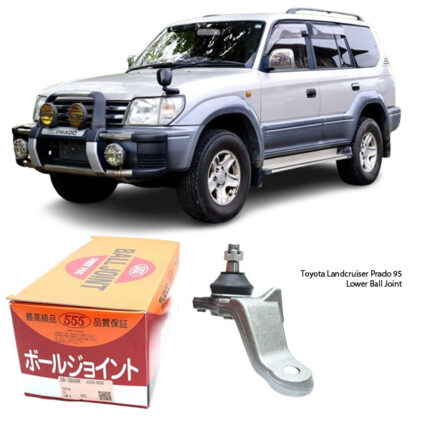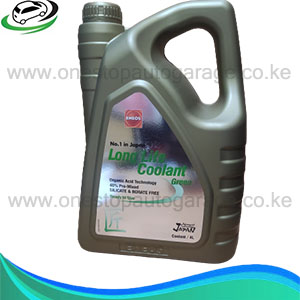-17%
Get Eneos Long Life Coolant 4litres
Car coolant, also known as antifreeze or engine coolant, is a vital fluid in a vehicle’s cooling system. Its primary function is to regulate the engine’s temperature by transferring heat away from the engine to the radiator and dissipating it into the surrounding air. Here’s an overview of car coolant, its functions, types, signs of issues, and maintenance:
Function of Car Coolant:
-
1. Heat Transfer and Temperature Regulation:
- Heat Absorption: Car coolant absorbs heat generated by the combustion process in the engine cylinders. This heat absorption prevents the engine from overheating during operation.
- Heat Dissipation: The coolant carries the absorbed heat away from the engine to the radiator, where it is dissipated into the surrounding air. This transfer of heat helps regulate the engine’s operating temperature within the optimal range for efficient performance.
2. Freeze and Boil Protection:
- Freeze Point Depression: Car coolant is formulated to lower the freezing point of water, preventing the coolant mixture from solidifying in cold temperatures. This property is crucial for ensuring that the engine and cooling system remain functional in freezing weather conditions.
- Boiling Point Elevation: Coolant also raises the boiling point of the water in the cooling system, allowing the engine to operate at higher temperatures without the coolant boiling over. This protection is vital for preventing overheating, especially during hot weather or heavy engine loads.
3. Corrosion and Rust Inhibition:
- Corrosion Prevention: Coolant contains corrosion inhibitors that protect metal components in the cooling system from rust and corrosion. These inhibitors form a protective barrier on metal surfaces, preventing oxidation and extending the life of components like the radiator, water pump, heater core, and engine block.
4. Lubrication and Seal Condition:
- Lubrication: Some coolant formulations include lubricating additives that help maintain the smooth operation of the water pump and other moving parts in the cooling system. This lubrication reduces friction and wear, extending the life of seals and bearings.
- Seal Protection: Coolant also contains seal conditioners that keep rubber seals and gaskets pliable and effective. This prevents leaks and ensures proper sealing throughout the cooling system.
5. pH Balance and Chemical Stability:
- pH Balance: Coolant maintains a stable pH balance to prevent acidic or alkaline conditions that can accelerate corrosion or damage to cooling system components.
- Chemical Stability: Modern coolants are designed to maintain their chemical stability over extended periods, providing reliable performance and protection throughout the coolant’s service life.
6. Compatibility with Materials:
- Material Compatibility: Coolant is formulated to be compatible with various materials used in engine construction, such as aluminum, copper, brass, steel, and rubber seals. This compatibility ensures that the coolant does not degrade or damage these materials over time.
Types of Car Coolants:
- Ethylene Glycol-Based:
- Traditional coolant type, widely used in most vehicles.
- Effective heat transfer properties and freeze/boil protection.
- Available in various colors (green, blue, red, etc.) depending on the manufacturer and additives.
- Propylene Glycol-Based:
- Non-toxic alternative to ethylene glycol.
- Used in environmentally sensitive applications and certain newer vehicles.
- Less toxic but typically more expensive than ethylene glycol.
- Extended-Life Coolants (ELC):
- Long-life coolant formulations that use organic acid technology (OAT) or hybrid organic acid technology (HOAT).
- Offer extended service intervals (up to 5 years or 150,000 miles) and enhanced corrosion protection.
Signs of Issues with Car Coolant:
- Coolant Leaks:
- Puddles or stains under the vehicle, especially under the engine or radiator, indicate coolant leaks.
- Check hoses, connections, radiator, water pump, and heater core for signs of leakage.
- Engine Overheating:
- High temperature gauge readings or steam coming from under the hood suggest coolant circulation problems.
- Insufficient coolant levels or coolant leaks can cause engine overheating.
- Low Coolant Levels:
- Check the coolant reservoir regularly to ensure it is filled to the recommended level.
- Low coolant levels may indicate leaks or excessive coolant consumption.
- Discolored Coolant:
- Healthy coolant is brightly colored (green, orange, pink, blue, etc.).
- Discoloration (brown, muddy, or rusty appearance) indicates contamination or chemical breakdown, necessitating coolant flush and replacement.
- Foaming or Bubbling in Radiator:
- Air bubbles or foaming in the radiator when the engine is running may indicate air pockets or combustion gases entering the cooling system.
- This can be caused by a blown head gasket or other internal engine issues.
- Sweet Smell or Odor:
- A sweet smell inside or outside the vehicle, especially near the engine or radiator, suggests coolant leakage.
- This odor is distinctive and indicates the presence of ethylene glycol, the main ingredient in many coolants.
Maintenance and Care:
- Regular Inspection: Check coolant levels and inspect for leaks, discoloration, or contamination.
- Coolant Flush: Follow manufacturer recommendations for coolant flush intervals (typically every 2-5 years) and use the correct coolant type specified for your vehicle.
- Top-Up Coolant: Use distilled water and coolant mixtures to top up the coolant level when necessary, ensuring the correct ratio.
Follow us on Facebook For more parts.



